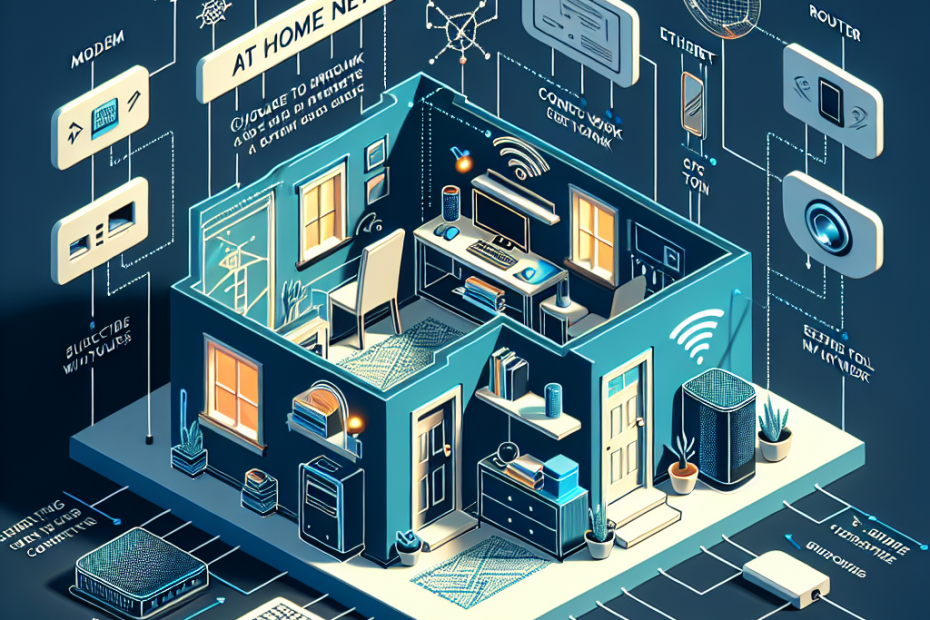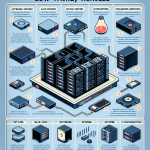Setting Up Your Home Network: A Beginner’s Guide for a Reliable and Secure Connection
Creating a reliable home network is truly an adventure! I remember the first time I decided to set up mine; it felt like stepping into a new world where everything was connected. The thrill of crafting a space that works seamlessly for all my devices is something I still cherish. And the good news? Setting up a stable, secure, and flexible network doesn’t have to drain your wallet. Let me walk you through some key points I believe every beginner should consider.
1. Understand Your Needs
Before jumping into the techy jargon, it’s essential to take a moment and reflect on what you really need. Trust me, this simple step can save you a lot of headaches later on.
- Assess Network Requirements: Take stock of what devices you’ll be connecting. Are you going to be streaming your favorite shows in 4K, or perhaps diving into the immersive world of online gaming? Maybe you’re even dreaming about setting up a homelab with servers. Each of these tasks requires different bandwidth, so understanding your needs helps in distributing resources wisely.
- Plan Coverage: Consider your home’s layout. If you have multiple floors or an expansive yard, think about how you’d cover those spots. Strong, reliable Wi-Fi throughout your space might be crucial if you have smart devices scattered in different rooms.
2. Router and Modem Essentials
The cornerstone of any home network lies in your choice of router and modem. This can be a game-changer!
- Choose a Quality Router: Not every router is built for performance. Look for dual-band or tri-band routers to minimize interference, especially if you have several devices connected. Features such as MU-MIMO and beamforming can further enhance your network’s efficiency.
- Separate Modem and Router: While your Internet Service Provider might offer a combo unit, opting for a dedicated router with a separate modem often leads to better performance and gives you more control over settings. This can be particularly valuable if you want to fine-tune your setup.
To dive deeper into router choices, I found a great resource on Tom’s Guide’s Best Routers that can help you find the right device.
3. Switches for Wired Connections
In today’s tech-driven world, having a stable wired connection is indispensable for many applications.
- Invest in a Managed Switch: If you anticipate needing several wired connections, a managed switch could be a fantastic investment. It provides the stability and speed that many home offices, gaming consoles, and streaming boxes demand.
- Power Over Ethernet (PoE): As you set up devices like security cameras or smart home hubs, think about exploring PoE switches. They can power devices while providing a data connection, reducing the number of cables cluttering your space.
4. Enhance Wi-Fi Coverage
There’s nothing more frustrating than encountering Wi-Fi dead zones—especially when you’re engrossed in a critical task or binge-watching your favorite series!
- Mesh Systems or Extenders: For larger homes, I highly recommend investing in a mesh Wi-Fi system. These systems seamlessly cover every nook and cranny. If you’re on a tighter budget, range extenders can work too, but be cautious! They can sometimes lower your overall speed.
- Positioning: The strategic placement of your router can dramatically influence your Wi-Fi performance. Make sure to place it centrally and elevated, away from potential interferences like microwaves or thick walls.
For a more comprehensive understanding of mesh systems, swing by CNET’s Guide on Mesh Wi-Fi Systems.
5. Secure Your Network
In our hyper-connected world, securing your home network is absolutely vital. Don’t overlook this crucial step!
- Set Strong Passwords: Utilize WPA3 security whenever possible—it’s the current gold standard for encryption. Make sure to change default passwords for your router and devices; using easily guessable passwords is a big no. If you struggle to remember numerous secure passwords, consider using a password manager to help.
- Regular Updates: Technology evolves rapidly, and so do potential vulnerabilities. Regularly updating your router’s firmware is critical. Automating these updates can not only save you time but also bolster your security.
6. Monitor Your Network Performance
Once you’ve set everything up, keeping an eye on your network’s performance is key to spotting issues before they escalate.
- Use Network Management Tools: Tools like OpenWrt or DD-WRT can transform your ordinary router into a robust management hub. These tools enable you to track traffic, set priorities, and manage bandwidth efficiently.
- Conduct Regular Speed Tests: Websites like Speedtest.net make it easy to check your internet speeds periodically. If you find that your speeds are consistently below expectations, you might need to troubleshoot.
7. Consider Future Needs
It’s essential to think ahead; networking needs can evolve as technology advances and new devices come into play.
- Scalability: Always keep the future in mind when designing your network. Having enough bandwidth and devices like switches and mesh systems can simplify the process when adding new devices.
- Embrace Smart Home Technology: If you’re toying with the idea of venturing into smart home devices, ensure your network can accommodate these additions. While they certainly bring convenience, many require a robust internet connection.
I hope my insights help you embark on your networking journey with confidence! Remember, building a stable and secure home network can feel overwhelming at first, but it’s entirely achievable. Your home network serves as the backbone of all your online activities, whether it’s streaming, gaming, or even venturing into the exciting world of a homelab.
Please, share your thoughts! If you have experiences, tips, or any questions about setting up your home network, I’d love it if you could leave a comment below. Let’s learn and grow together in this ever-evolving tech landscape!



